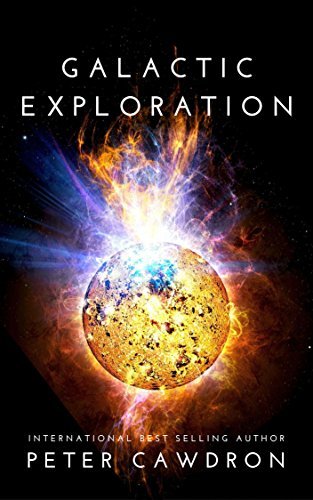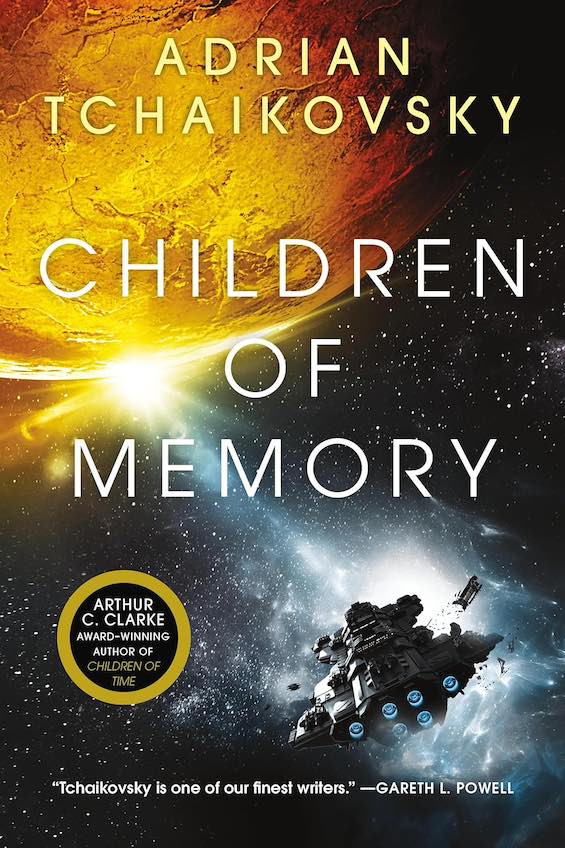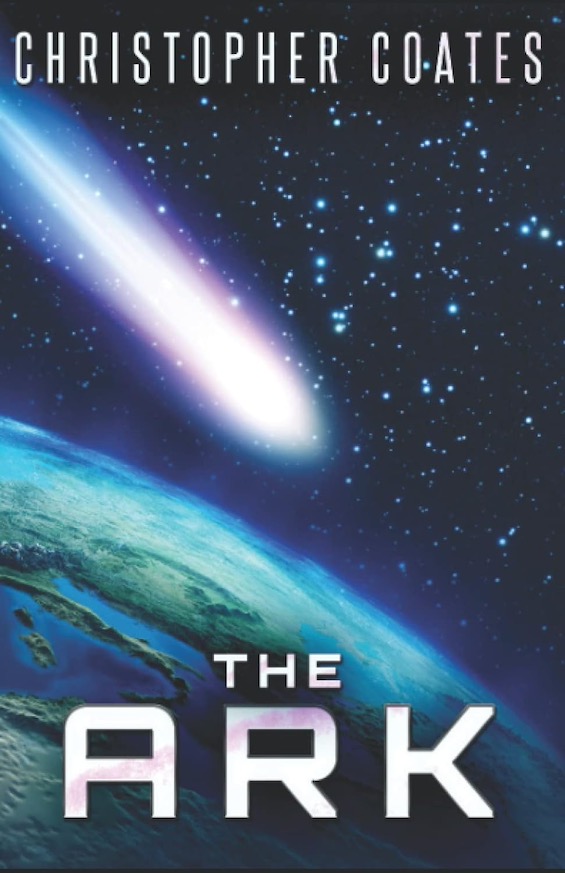
Three enormous starships depart Earth on a mission of galactic exploration in the twenty-fourth century. Each harbors a crew of two hundred highly trained specialists. None of them is armed. “The Serengeti had gone north, above the galactic plane in search of intelligent life in other galaxies, and the Savannah had been commissioned to explore the outer reaches of the Milky Way, charting the star-forming regions of the galaxy. The Rift Valley had been given the core,” where stars are packed tightly together in the galaxy’s most ancient region. And in a series of four closely linked novellas under the title Galactic Exploration, Australian science fiction phenomenon Peter Cawdron explores the divergent experiences of the three starships. Cawdron’s literary mission is to examine the Rare Earth Hypothesis from several different angles. It’s endlessly fascinating.
Galactic Exploration (First Contact #2) by Peter Cawdron (2012) 374 pages ★★★★☆

“The silence that surrounds us” in our limited exploration of the galaxy
In a lengthy Afterword, Cawdron relates his thinking about the issues he explores in this book. It’s a common practice for him, and it conveniently underlines his belief (and mine) that science fiction is truly a literature of ideas.
“As a story,” Cawdron writes, “Serengeti [the first of the four novellas] poses a slight variation on the most popular explanation for the silence that surrounds us—the Rare Earth Hypothesis. Serengeti recognizes that the Earth is rare, but suggests this may be a local peculiarity, limited to this galaxy.”
A skeptical view of the Rare Earth Hypothesis
Cawdron is skeptical about the Rare Earth Hypothesis. “It misses the reality that Earth became unique” but didn’t start out that way. In fact, like countless other planets astronomers have observed, Earth began existence long, long before life originated here.
And, belaboring the obvious, Cawdron asserts that “the Rare Earth Hypothesis assumes because nothing has been found [of intelligent life other than on Earth], nothing will ever be found.” Which is, of course, a non sequitur. Serengeti advances the thesis that life exists on Earth alone—at least in our neighborhood on the periphery of the Milky Way—simply because the conditions necessary for the emergence of life are rare in our galaxy . . . but may not be elsewhere in the universe.
So, why has SETI failed?
For the record, astronomers have discovered more than 4,000 exoplanets to date, according to NASA—and the number grows weekly. Only a handful appear to be small, rocky planets in some way comparable to Earth and thus deemed more likely to harbor life as we know it. However, the “nearby” stars around which they orbit are, in fact, located at immense distances, and contemporary technology makes it exceedingly difficult to locate any exoplanet other than a gas giant somewhat similar to Jupiter. The closest star, Proxima Centauri, is located four light-years, or more than 24.9 trillion miles away. A starship traveling at the rate of one million miles an hour would take more than 2,800 years to reach the two exoplanets confirmed to be circling Proxima Centauri.
Why, you may ask, has SETI failed so far? The Search for Extraterrestrial Intelligence has been underway for many decades. In fact, some say it began with the advent of radio in the early 1900s. Cawdron’s explanation is intriguing. “Our radio emissions extend less than a hundred light-years from Earth, barely 0.1% of the one hundred thousand light-year span of our galaxy.”
Why galactic exploration might confirm the Hypothesis
In the second of the four novellas, Trixie and Me, Cawdron “poses an alternative reason for the Rare Earth [Hypothesis]. Rather than being the first to emerge into the interstellar environment, we may be the last, or at least the last in a long line.” After all, Earth and our sun, Sol, are youngsters in galactic terms. We’re located far from the center of the Milky Way in the outer reaches of a spiral arm, where stars have formed far more recently than those in the center. And if life has in fact developed in many locations in the galaxy, it’s far more likely to have made its presence known closer to the center.
Savannah, the third novella, advances a more radical theory. “One possibility considered quite plausible in SETI circles,” Cawdron writes, “is that alien races may have reached a point of singularity, where their mastery of what would equate to computers would allow their minds to be uploaded into a virtual world obscured from the natural universe.” And that mastery is biological, not technological. As the author notes, “no nuts and bolts machine can compete with 3.8 billion years of evolutionary biology.”
Will extraterrestrial contact provoke interspecies war?
In the fourth and final novella, War, Cawdron comes to grips with the nightmare scenario that is portrayed in so many science fiction books and films: hostile aliens. “If there are other intelligent life-forms,” the argument goes, “there will be war.” And this novella of that name portrays war’s emergence in a particularly entertaining way. However, he professes to be skeptical (as, for what it’s worth, am I) that an alien race would be more likely to be hostile than simply curious to encounter humankind.
About the author

To date, Australian author Peter Cawdron has written eighteen standalone novels and novellas in his First Contact series as well as other science fiction titles. He is a member of the advisory board of the Lifeboat Foundation, an NGO dedicated to encouraging scientific advancements while helping humanity survive existential risks and possible misuse of increasingly powerful technologies, including genetic engineering, nanotechnology, and robotics/AI. Cawdron writes a lively blog, sharing his thoughts on science and science fiction.
For further reading
This is one of the novels in Peter Cawdron’s insightful First Contact book series.
For more good reading, check out:
- The ultimate guide to the all-time best science fiction novels;
- Great sci-fi novels reviewed: my top 10 (plus 100 runners-up);
- Seven new science fiction authors worth reading; and
- The top 10 dystopian novels reviewed here (plus dozens of others).
And you can always find my most popular reviews, and the most recent ones, plus a guide to this whole site, on the Home Page.



























